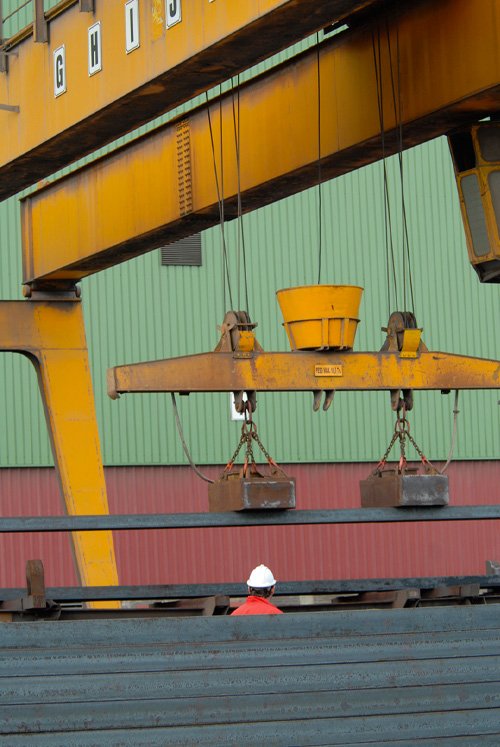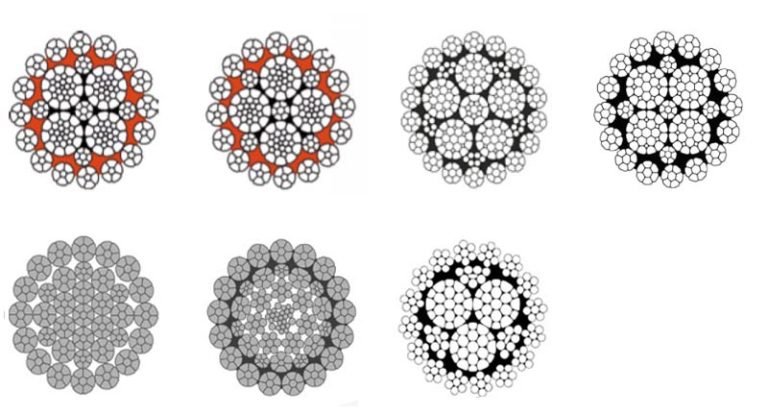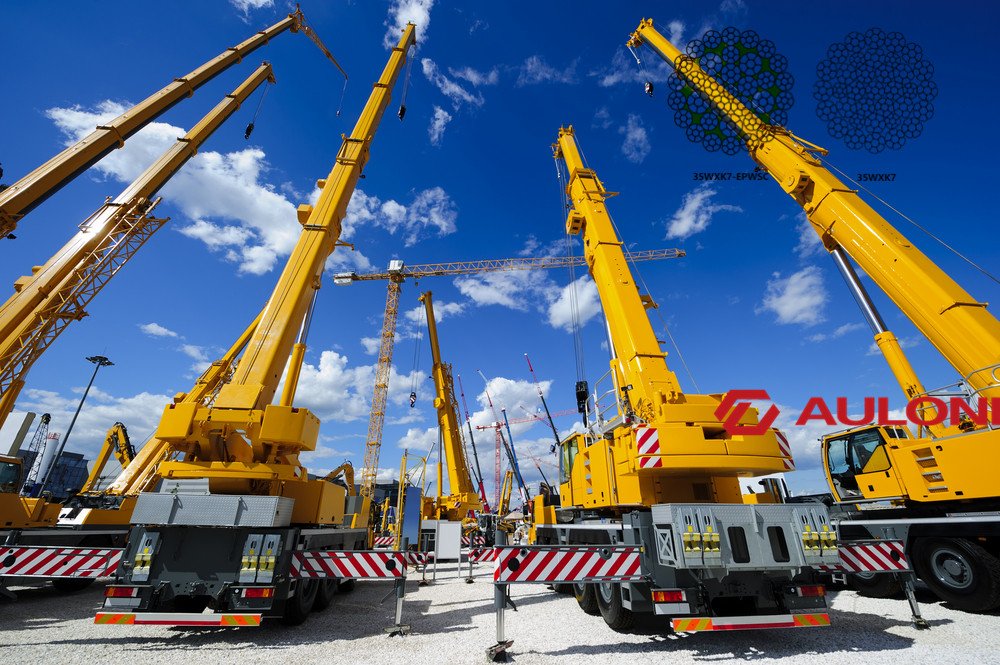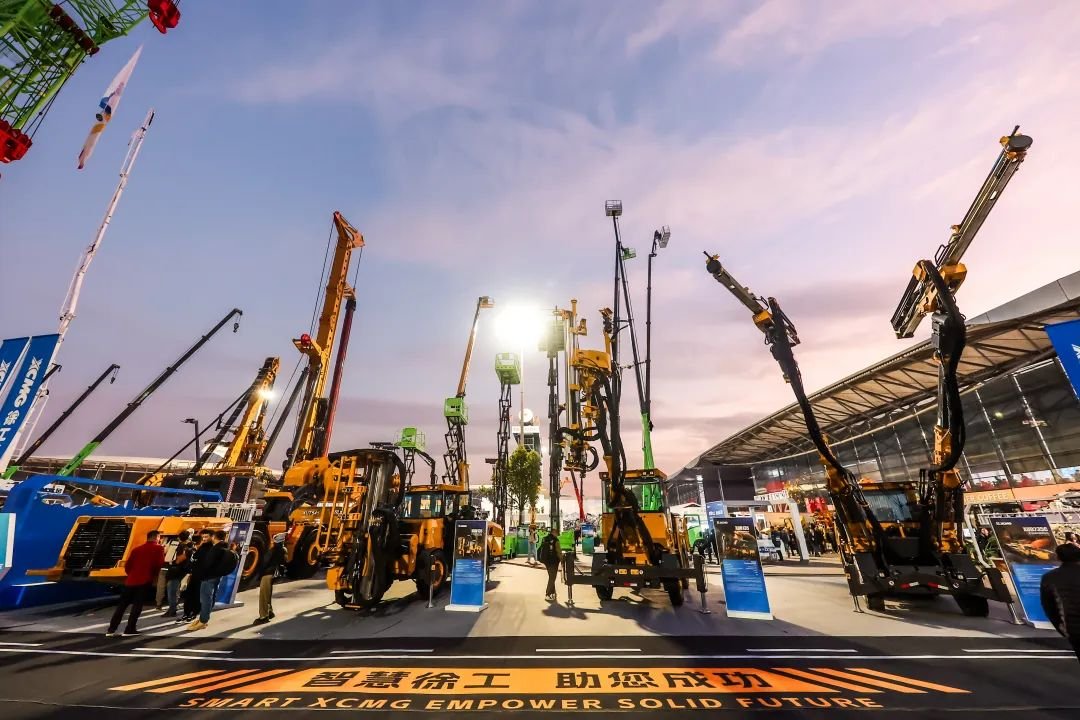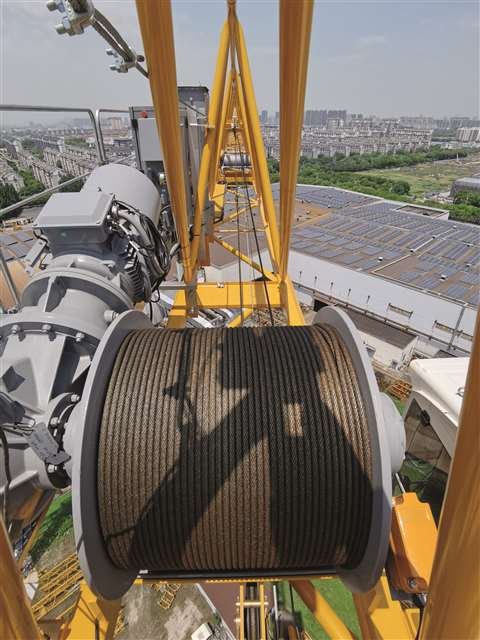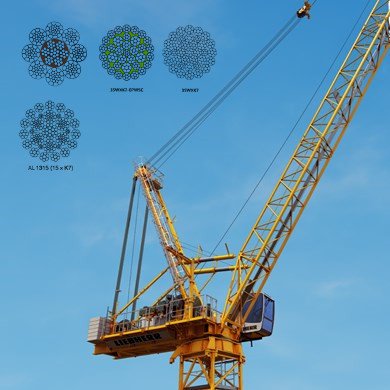Inspecting wire ropes for signs of wear and potential failure is crucial for safety. Here are some signs indicating a wire rope may no longer be safe to use:
- Broken Wires: Even a few broken wires can significantly compromise the strength of the rope. Pay attention to clusters of broken wires, especially if they occur in the same area, as this can indicate localized stress or wear. Use a magnifying glass if necessary to inspect each wire closely.
- Corrosion: Corrosion weakens the metal structure of the wire rope, making it more prone to failure. Look for reddish-brown spots or flaky deposits on the surface of the wires, particularly in areas where moisture or chemicals are present. Pay close attention to the valleys between strands where water can collect and accelerate corrosion.
- Kinks or Distortions: Kinks, bends, or birdcaging (where strands splay out from the main body of the rope) are signs of misuse or overloading. These deformations create stress concentrations that can lead to failure under load. Check the entire length of the rope for any irregularities in its shape or alignment.
- Excessive Wear: Wear on the outer wires can occur from friction with sheaves, drums, or other surfaces. Inspect the outer strands for signs of flattening, thinning, or groove formation. Pay attention to areas where the rope comes into contact with equipment or passes over pulleys, as these are common wear points.
- Loss of Lubrication: Lubrication helps to reduce friction between wires and strands, prolonging the life of the rope. If the rope appears dry, stiff, or dirty, it may be lacking proper lubrication. Inspect the rope for signs of old, dried-out lubricant or contaminants that can accelerate wear.
- Reduced Diameter: Measure the diameter of the rope at several points along its length using calipers or a diameter tape. Compare these measurements to the manufacturer’s specifications or the original diameter of the rope. A significant reduction in diameter indicates internal wear, stretching, or flattening of the rope.
- Heat Damage: Heat can cause metallurgical changes in the wires, reducing their strength and flexibility. Look for discoloration, scale, or other signs of thermal damage, especially near areas of high friction or heat generation. If the rope has been exposed to temperatures above its recommended operating range, it may need to be replaced.
- Visible Core: The core of the rope should remain fully encapsulated by the outer strands. If the core becomes visible or protrudes from the surface of the rope, it indicates severe wear or damage to the outer layers. This exposes the core to additional stress and increases the risk of failure.
- Wire Protrusion: Wires that protrude from the surface of the rope pose a significant safety hazard. These “fishhooks” can snag clothing or skin and indicate severe wear or fatigue in the affected area. Trim any protruding wires and closely inspect the surrounding area for additional damage.
- Previous Overload: If the rope has been subjected to loads beyond its rated capacity, it may have experienced permanent deformation or elongation. Even if there are no visible signs of damage, the rope should be retired from service and thoroughly inspected for hidden defects.
Regular inspections should be conducted by trained personnel following established procedures and guidelines. Any rope exhibiting one or more of these signs should be taken out of service immediately and replaced with a new one to ensure the safety of personnel and equipment.
Ask For A Quick Quote
Fill out a quick form to get a personalized quote tailored to your specific needs.

